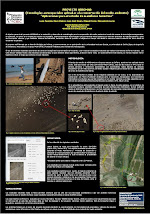The objective of the AEROMAB (Aerospace Technologies applied to Biodiversity Conservation) project is to assess and develop methodologies for the study of the environment through the use of aerospace technology.
Specifically aims to investigate the use of Unmanned Aerial Vehicles (UAS: Unmanned Aerial Systems) for monitoring and census wildlife, and for evaluating the environmental impact of infrastructures on the natural environment.
Both lines of work are useful for the management of species and habitats, since knowledge of these stocks and the non-natural causes of mortality is the first step towards conservation.
The overall objectives focus in the following actions:
Use of Unmanned Aerial Systems (UAS) for:
-monitoring wildlife and their habitats
-characterize vegetation structure
-characterize power pole design to predict impact on bird populations
-searching bird casualties in powerlines and windfarms
-monitoring wildlife and their habitats
-characterize vegetation structure
-characterize power pole design to predict impact on bird populations
-searching bird casualties in powerlines and windfarms
1. Applications for wildlife monitoring:
-Development of UAS specific for censunsing wildlife populations (e.g., ungulates and large flocking birds), based on digital cameras recording in the visible range.
-Use of thermal cameras for detecting communal avian roosts.
-Biological sample collection at different altitudes.
-Monitoring of bird migration actitvity in stopover areas and migratory corridors.
-Use of thermal cameras for detecting communal avian roosts.
-Biological sample collection at different altitudes.
-Monitoring of bird migration actitvity in stopover areas and migratory corridors.
2. Evaluation of impacts
-Development of methodology for evaluating potential risks for birds of existing powerlines and windmills.
-Detection of bird casualties due to electrocution and collision in powerlines.
-Detection of bird casualties due to electrocution and collision in powerlines.
The implementation of the UAS as a new technological tool for environmental conservation is a combination of the interests of stakeholders, contributing to a development of new methods for data acquisition in conservation biology, and additionally, to bolster the aviation industry in Andalusia.
The objectives in this project are consistent with the priority of the Andalusian Research Plan, as it is intended to develop new data acquisition systems and environmental monitoring and characterization using advanced technologies that have already shown their usefulness in other areas but have been rarely implemented in a realistic way in the field of study that is presented.


No comments:
Post a Comment